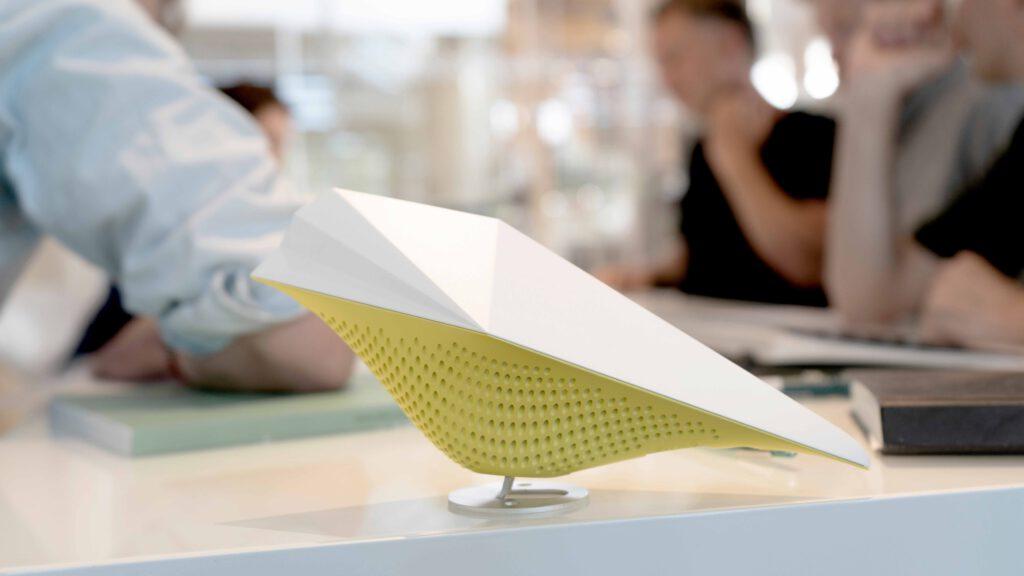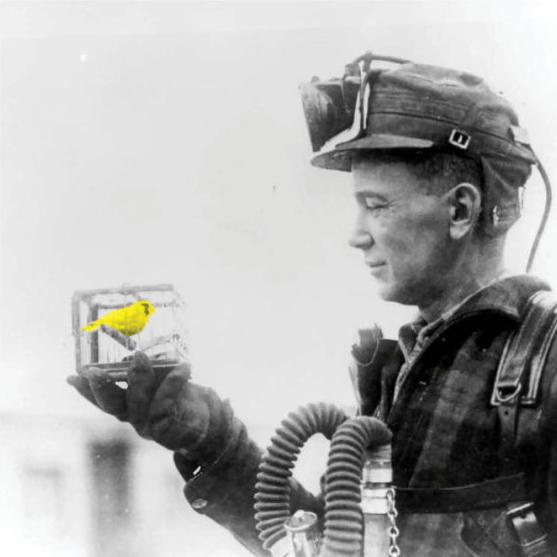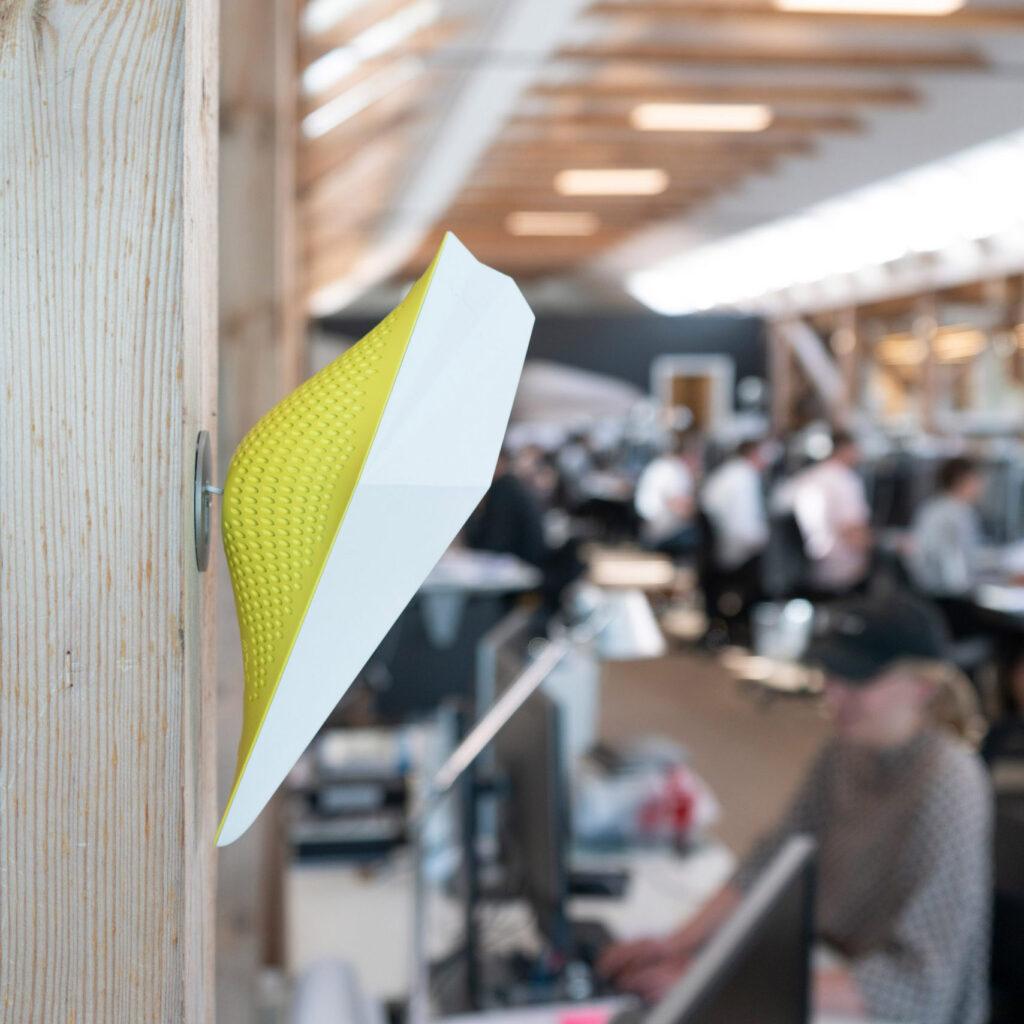A little bird told you …
Inspired by traditional survival strategies of experienced miners, the architects at 3XN/GXN have “bred” a stylish canary that takes care of our health in the workplace.
Everyone has heard the tragic stories of hard-working miners who never saw the light of day again after a day’s work underground. This was because they ran out of air, as it were, down in the coal mine.
Nowadays it is common knowledge that in deep tunnels the carbon monoxide content in the air can reach levels that kill you. But such horror stories have long been a thing of the past, at least in modern mines. Ventilation systems prevent such terrible accidents.
Canaries as tragic lifesavers
Before these systems arrived, miners had to find other solutions: they took little canaries down into the tunnels as their companions while they worked.
This is simply because the lungs of birds absorb carbon monoxide much faster than human lungs. These birds are also much smaller than a seasoned miner. In short: when the canary fell off its perch, the men fled the tunnel. The canary’s fate enabled the miners to reach safety in time.
There’s no doubt that such living air monitors are rather outdated today, for many reasons. But it is precisely this history that the developers of a decidedly modern device took as their inspiration. Partnering with the window developers and living environment professionals from Velux, the architecture studio 3XN/GXN has developed a highly sensitive sensor that constantly monitors a room’s indoor climate. It measures the CO2, temperature and humidity in the air every few minutes.
AirBird – the room monitor
If the measurements are too high or too low, an algorithm triggers a warning signal. This is both a flashing light and the chirping sound of a canary!
So, the cat’s out of the bag now – the whole thing has been designed as a cute little bird in an origami style. It can be carried from meeting room to meeting room or simply mounted permanently on office walls. The logical name of this stylish sensor: AirBird.
“The AirBird gives shape to air quality,” says Kasper Guldager Jensen, founder of 3XN/GXN, proudly. “It aims to encourage people to be more aware of better air quality and to react accordingly.” This is particularly relevant in these pandemic times. And, in the long term, it is a development that is bound to be integrated into the construction of smart office buildings.
Connection between indoor air and health
After all, the experts have found that people spend up to 90 percent of their time indoors. They remark: “It’s therefore especially important to monitor indoor air and take measures to improve it.” Indeed, research has shown that low pollutant concentrations indoors improve the performance of office workers, make learning and teaching easier for students and teachers, and improve sleep. And we also know today that this can reduce the risk of asthma and allergies.
This is also highlighted by smart office expert Andreas Thamm from UBM Development. His thinking is on a larger scale, though: “It’s a question of boosting employee motivation and health by improving the indoor climate and other adjustable factors. If it were possible to reduce personnel costs by a small percentage – for instance by lowering sickness rates – this would save millions of euros for large companies.”
Health as the new currency
Lasse Lind from the team of AirBird developers goes even further. He points out: “Health and well-being are the new currency. It is about designing for better learning, better sleep, better work. The new frontier of well-being is our indoor environments.”
This is the very reason why the AirBird doesn’t just chirp when it has something to say. It also transmits its collected data in real time to the “digital brain” of a modern office. The development team is convinced that wherever it is fitted, the AirBird can make a significant contribution to the health and well-being of people in the offices.
Smart office takes shape
The developers say: “This data enables building owners to improve well-being while simultaneously trim energy use and expenses.” According to Thamm, this is an especially relevant aspect in times of the smart office. He emphasizes that it will be possible not just to fine-tune costs, but also reduce the carbon footprint of the building when in operation.
Used correctly, modern sensor technology like the AirBird therefore not only supports the indoor climate, but also the climate in the management echelons. Not to mention what we actually understand by “climate”: that of the planet on which we all live.
Text: Johannes Stühlinger
Translation: Rosemary Bridger-Lippe
Images: 3XN Architects





